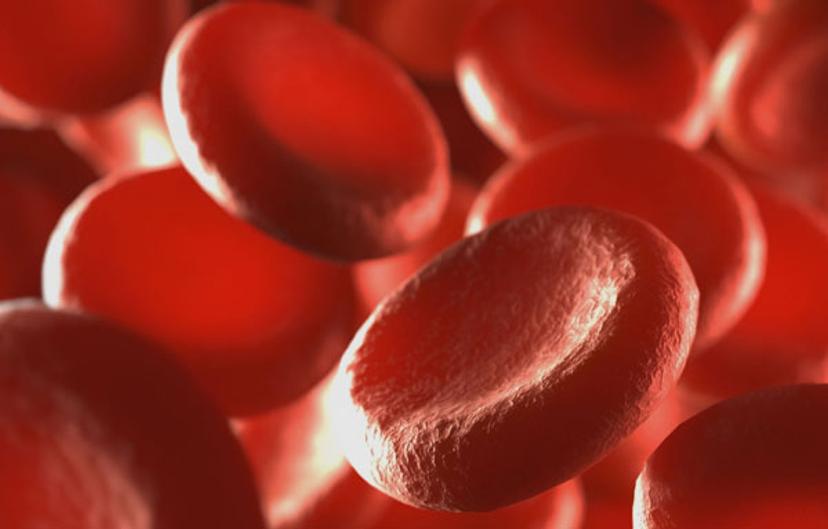Hemlibra Provides Control of Bleeding in People with or without Factor VIII Inhibitors
Roche’s Hemlibra reduced treated bleeds by 96 percent compared to no prophylaxis in phase III HAVEN 3 study in haemophilia A without factor VIII inhibitors
22 May 2018
Roche has announced full results from the phase III HAVEN 3 study evaluating Hemlibra® (emicizumab) prophylaxis administered every week, or every two weeks, in people with haemophilia A without factor VIII inhibitors, and the phase III HAVEN 4 study evaluating Hemlibra prophylaxis administered every four weeks in people with haemophilia A, with or without factor VIII inhibitors. Data from both pivotal studies were presented as late-breaking abstracts at the World Federation of Hemophilia (WFH) 2018 World Congress in Glasgow, Scotland.
In a subset of patients in the HAVEN 3 study who previously received factor VIII prophylaxis, the standard of care, Hemlibra reduced bleeds by 68 percent compared to their prior therapy. Phase III HAVEN 4 results showed Hemlibra every four weeks provides clinically meaningful control of bleeding in people with or without factor VIII inhibitors.
“Hemlibra is the first medicine to show superior efficacy to prior factor VIII prophylaxis, the current standard of care therapy, as demonstrated by a statistically significant reduction in treated bleeds in the HAVEN 3 study intra-patient comparison,” said Johnny Mahlangu, Faculty of Health Sciences, University of the Witwatersrand and NHLS, Johannesburg, South Africa. “Even with current prophylactic treatments, many people with haemophilia A continue to have bleeds that can lead to long-term joint damage, and there is a need for more treatment options.”
Phase III HAVEN 3
In the phase III HAVEN 3 study, adults and adolescents aged 12 years or older without factor VIII inhibitors who received Hemlibra prophylaxis every week or every two weeks showed a 96% (p<0.0001) and 97% (p<0.0001) reduction in treated bleeds, respectively, compared to those who received no prophylaxis. In addition, 55.6% (95% CI: 38.1; 72.1) of people treated with Hemlibra every week and 60% (95% CI: 42.1;76.1) of people treated with Hemlibra every two weeks experienced zero treated bleeds, compared to 0% (95% CI: 0.0; 18.5) of people treated with no prophylaxis. Importantly, in an intra-patient comparison, in patients who were previously enrolled in a prospective non-interventional study (NIS), once-weekly Hemlibra prophylaxis showed superior efficacy compared to prior factor VIII prophylaxis, the standard of care for people with haemophilia A without factor VIII inhibitors, as demonstrated by a 68% reduction (p<0.0001) in treated bleeds.
Additionally, 93.7% (n=89/95; 95% CI, 86.8; 97.7) of all participants who completed a treatment preference survey preferred Hemlibra to their previous haemophilia treatment, with 97.8% (n=45/46) of those in the intra-patient comparison preferring Hemlibra to their prior factor VIII prophylaxis. There were no unexpected or serious adverse events (AEs) related to Hemlibra, and the most common AEs were consistent with previous studies. The most common AEs occurring in 5% or more of people in the HAVEN 3 study were injection site reactions, joint pain (arthralgia), common cold symptoms (nasopharyngitis), headache, upper respiratory tract infection and influenza.

“These new pivotal data show that Hemlibra controlled bleeds in people with haemophilia A, while offering the flexibility of less frequent subcutaneous dosing options,” said Sandra Horning, MD, Roche’s Chief Medical Officer and Head of Global Product Development. “With this data, we now have positive results from all four of our phase III trials that reinforce the overall efficacy and safety of Hemlibra and its potential to improve care for all people with haemophilia A.”
Phase III HAVEN 4
In the single-arm phase III HAVEN 4 study, adults and adolescents aged 12 years or older with or without factor VIII inhibitors receiving Hemlibra prophylaxis every four weeks had a median annualised bleeding rate for treated bleeds of 0.0 (IQR: 0.0; 2.1), with 56.1% (95% CI: 39.7; 71.5) of people experiencing zero treated bleeds and 90.2% (95% CI: 76.9; 97.3) experiencing three or fewer treated bleeds. These results demonstrate that Hemlibra administration every four weeks can provide clinically meaningful control of bleeding in people with haemophilia A with or without factor VIII inhibitors. Additionally, all participants (n=41/41; 95% CI, 91.4; 100.0) who responded to a patient preference survey preferred Hemlibra to their previous haemophilia treatment. There were no serious AEs related to Hemlibra, and the most common AEs were consistent with previous studies. Injection site reaction was the most common AE, occurring in nine people in the HAVEN 4 study.
The impact of haemophilia A
Separately, real-world data from the NIS on the impact of haemophilia A on health-related quality of life (HRQoL) and the burden of current treatment (either on-demand or prophylactic bypassing agents or factor VIII replacement therapy, depending on inhibitor status and local clinical guidelines) were also presented. Results from a cohort of the NIS in children with haemophilia A with factor VIII inhibitors showed that living with and managing the condition has a substantially negative impact on physical and emotional health and results in a significant burden for caregivers.
In another cohort of the NIS, adults and adolescents with haemophilia A without factor VIII inhibitors reported higher HRQoL with prophylactic factor VIII treatment compared to episodic factor VIII treatment, based on validated tools including Haem-A-QoL and Haemo-QoL-SF. In addition, prophylactic factor VIII therapy resulted in fewer school and work days missed compared to episodic treatment. This NIS represents one of the largest studies of this type in people with haemophilia A with or without factor VIII inhibitors, and collected prospective real-world data for use as a valid historical control for pivotal studies in patients with haemophilia A.
In April 2018, the US Food and Drug Administration (FDA) granted Breakthrough Therapy Designation to Hemlibra for people with haemophilia A without factor VIII inhibitors, based on data from the HAVEN 3 study. Hemlibra was approved by the FDA in November 2017 for routine prophylaxis to prevent or reduce the frequency of bleeding episodes in adults and children with haemophilia A with factor VIII inhibitors based on results from the HAVEN 1 study and interim results from the HAVEN 2 study. Hemlibra was also recently approved by regulatory authorities in other countries around the world, including by the European Commission in February 2018 for routine prophylaxis of bleeding episodes in people with haemophilia A with factor VIII inhibitors. Data from both the HAVEN 3 and HAVEN 4 studies are being submitted to health authorities around the world for approval consideration.
Receive more great news like this straight to your inbox, become a member for free today!
